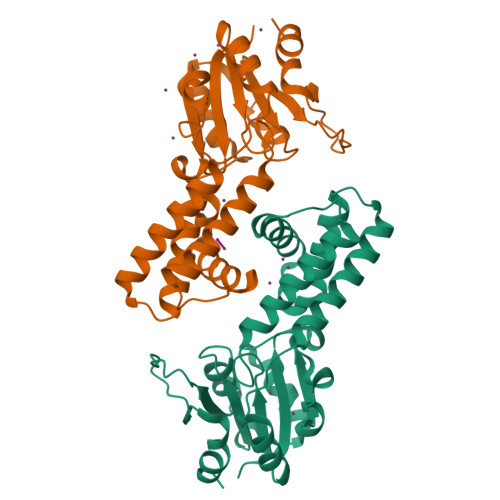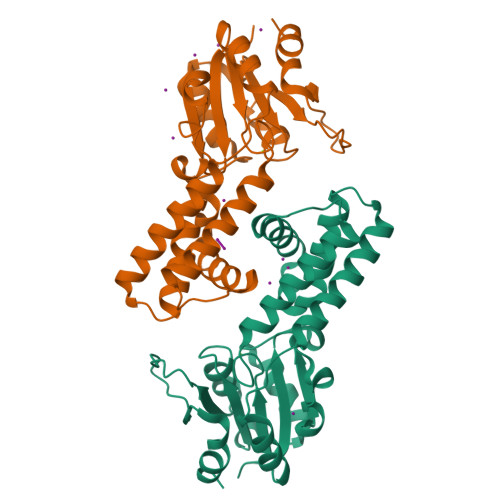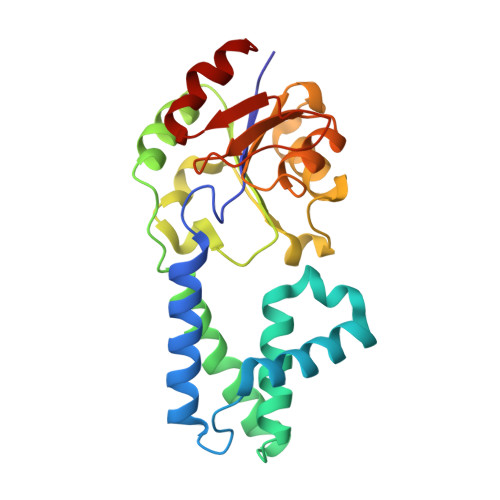Structure of 2-haloacid dehalogenase from Pseudomonas syringae pv. tomato DC3000
Hou, Z., Zhang, H., Li, M., Chang, W.(2013) Acta Crystallogr D Biol Crystallogr 69: 1108-1114
- PubMed: 23695255
- DOI: https://doi.org/10.1107/S0907444913006021
- Primary Citation of Related Structures:
3VAY - PubMed Abstract:
2-Haloacid dehalogenases (2-HADs) catalyse the hydrolytic dehalogenation of 2-haloalkanoic acids, cleaving the carbon-halide bond at the C(α)-atom position and releasing a halogen atom. These enzymes are of interest for their potential use in bioremediation and in the synthesis of industrial chemicals. Here, the crystal structure of 2-HAD from Pseudomonas syringae pv. tomato DC3000 (ps-2-HAD) at 1.98 Å resolution solved using the single-wavelength anomalous dispersion method is reported. The ps-2-HAD molecule consists of two structurally distinct domains: the core domain and the subdomain. Enzymatic activity analysis of ps-2-HAD revealed its capacity to catalyse the dehalogenation of both L- and D-substrates; however, the structure of ps-2-HAD is completely different from that of DehI, which is the only DL-2-HAD enzyme that has been structurally characterized, but shows similar overall folding to L-HADs. Single mutations of four amino-acid residues at the putative active site showed that they are related to its enzymatic activity, yet three of them are nonconserved among HADs. These observations imply that ps-2-HAD has a novel active site and a unique catalytic behaviour compared with other HADs. This study provides a structural basis and biochemical evidence for further elucidation of the catalytic mechanism of 2-HAD.
Organizational Affiliation:
National Laboratory of Biomacromolecules, Institute of Biophysics, Chinese Academy of Sciences, 15 Datun Road, Chaoyang District, Beijing 100101, People's Republic of China.




















